Ljubljana Biennale of Graphic Arts, Slovenia
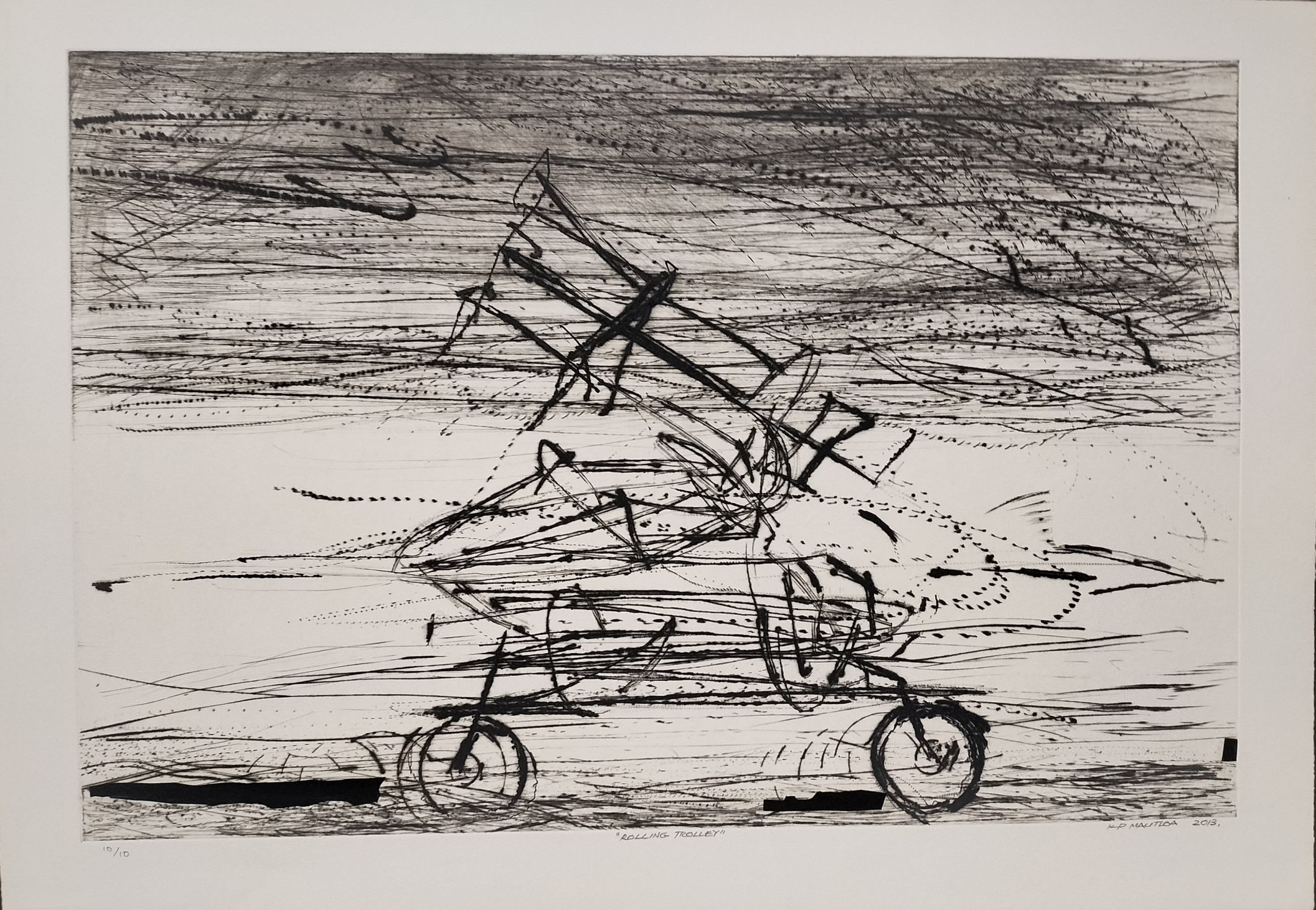
Kagiso Patrick Mautloa, Rolling Trolley, 2013. Courtesy the artist and Bag Factory Artists’ Studios
Arriving at Ljubljana train station two days before its public opening, we are surprised to find no fanfare around the 35th Biennale of Graphic Arts – no banners or posters anywhere in the city except for the major venues. During the press tour, many seasoned art writers seem to be unfamiliar with the Biennale, surprisingly confirming its relative obscurity despite its long history.
Like the brutalist architecture we encountered and many other cultural memories of former Yugoslavia, the Biennale’s achievements in bridging artists across ideological divides faded. Today, Ljubljana embraces its new life as the capital of a burgeoning EU country, and increasingly a center of mass tourism.
Founded in 1955, the same year as documenta 1 and the Bandung Conference, the Biennale played for decades a unique role as a gathering point for artists otherwise separated by geopolitical curtains. In its early editions, it enacted exemplarily the principles of the Non-Aligned Movement. However, since the end of Yugoslavia, it has been chasing the hegemonic logic of global biennalisation.
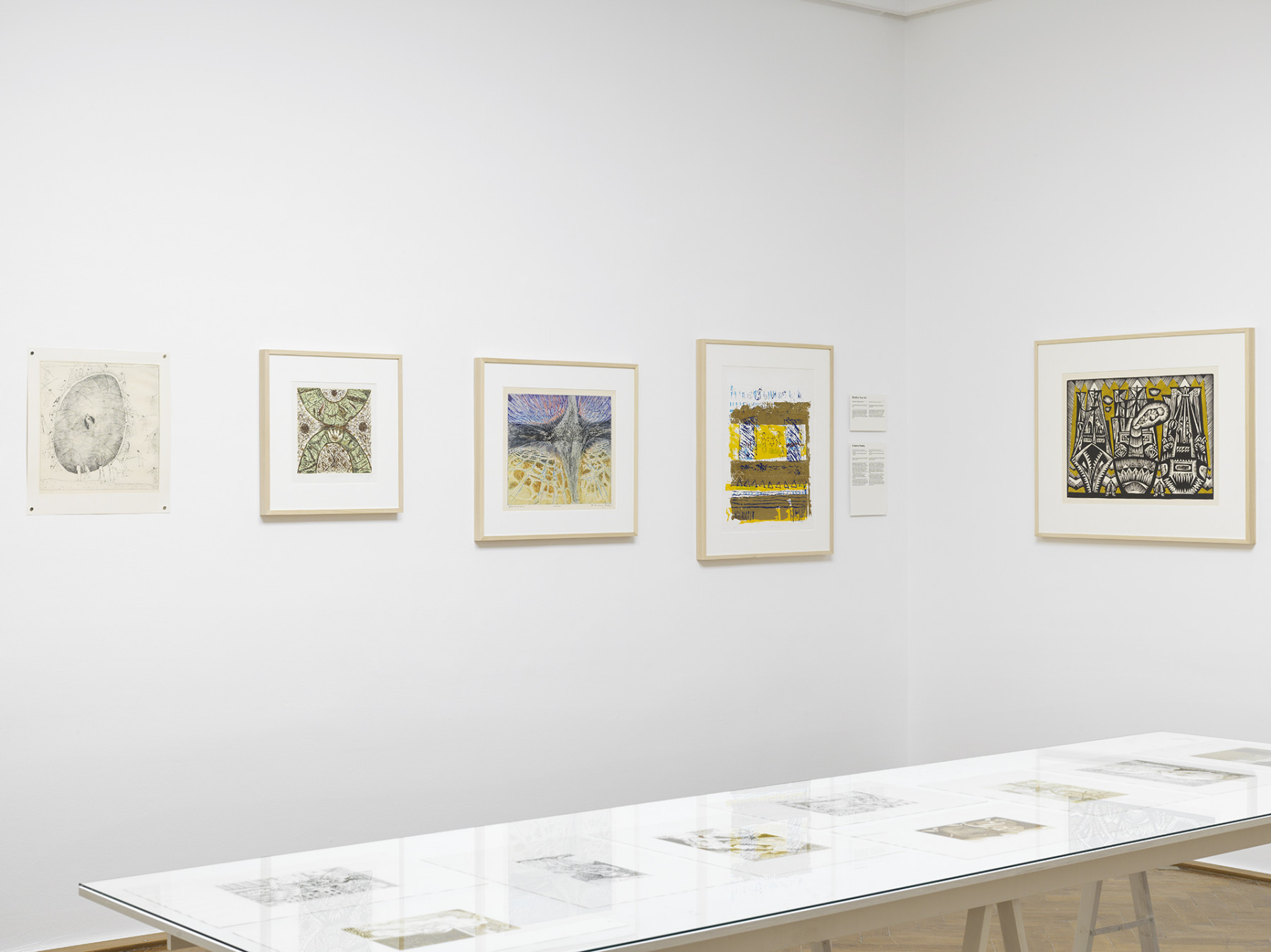
35th Ljubljana Biennale of Graphic Arts, MGLC Grad Tivoli. Silvi Liiva, Fish, 1973, etching. Sadik Kwaish Alfraji, Elegiac 1, 1986, colour etching. Krishna Reddy, Flowers, 1966, etching, colour aquatint. Medhat Nasr Ali, Composition 2, 1988, colour silkscreen. Lalitha Lajmi, The Mind’s Cupboards, 2012, 15 etchings. Photography: Jaka Babnik. MGLC Archive
Undoubtedly, Ibrahim Mahama’s appointment as artistic director of the 35th edition was a choice of ambition. The well received practice of the Ghanaian artist allows for a look back at the cultural histories of the Non-Aligned Movement, and for a revival of its spirit, an emancipatory spirit which both Yugoslavia and Ghana were crucial initiators of.
In fact, Mahama’s work is deeply interwoven with the emancipatory promises carried by the Ghanaian presidentship of Afro-Marxist Kwame Nkrumah (1957–1966), interrupted by a military coup and followed by years of neoliberalization pushed by the International Monetary Fund and the World Bank. Instead of nostalgically looking back at those unfulfilled promises, Mahama’s practice takes up the material, infrastructural, and often derelict traces of that past to activate their hidden but still present potentials. He did so, for example, by turning an old grain storage then made to ensure economic independence into a functioning art institution in Tamale named Nkrumah Volini.
“Failures/promises”: this is the recurring antinomy at the core of the curatorial endeavor pursued at the 35th Ljubljana Biennale of Graphic Arts. It’s aptly chosen by Mahama and the squad of curators by his side, namely Patrick Nii Okanta Ankrah, Exit Frame Collective, Alicia Knock, Selom Koffi Kudjie, Inga Lāce, and Beya Othmani. It is this antinomy that brings together the longstanding history of the “grafični bienale'' with the practice of the Ghanaian art community around the collective blaxTARLINES, from where Mahama emerges.
By directing the attention to the void left by these failed promises, Mahama proposes to reconnect to past intercontinental alliances (as exemplified by the Ghanaian-Yugoslavian one), and to kiss awake buried world views (those of Pan-Africanism as well as of the Non-Aligned Movement). Under Mahama’s much anticipated direction, today’s Ljubljana Biennale positions itself as the fertile terrain for seeds planted long ago.
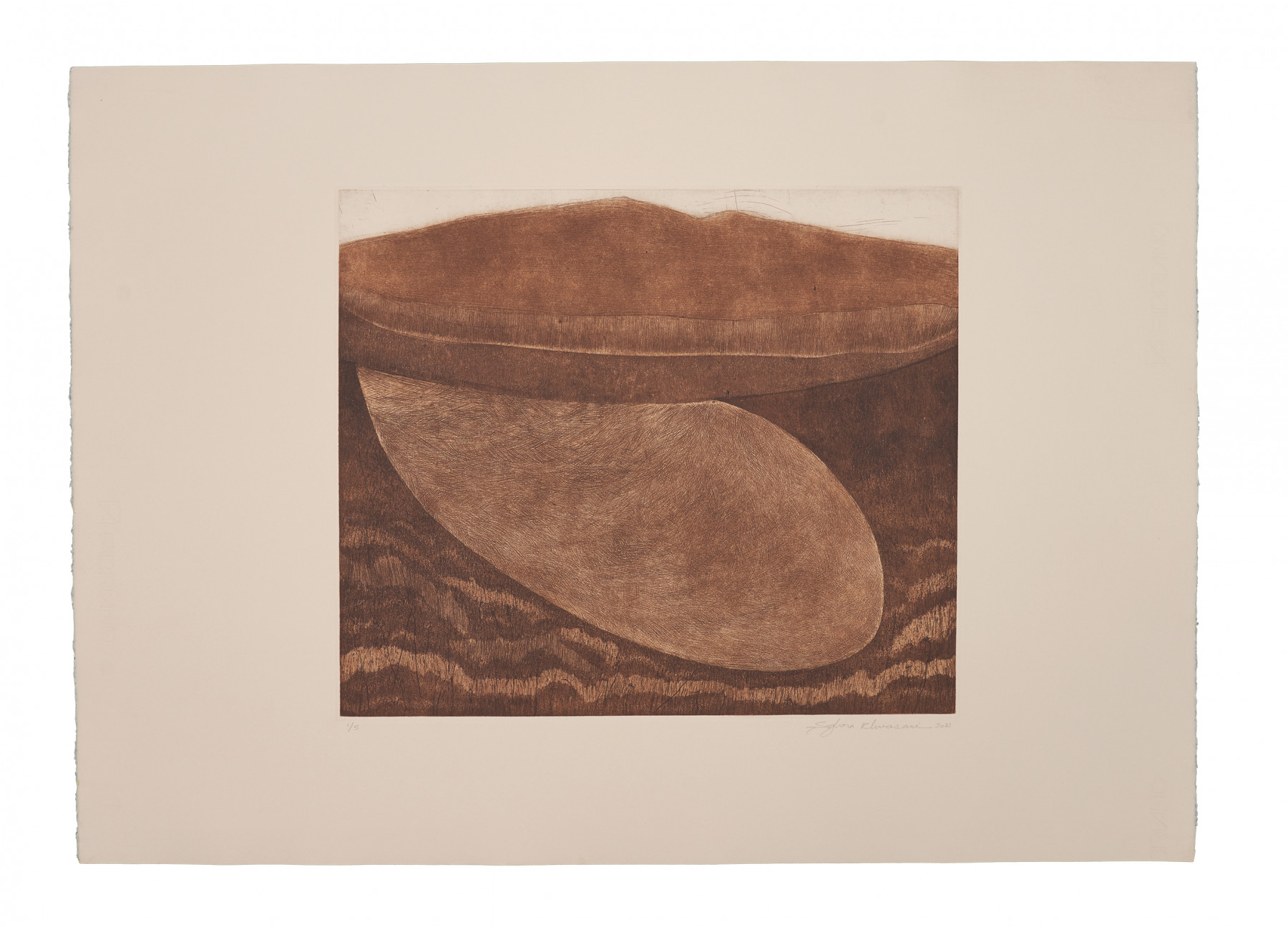
Soghra Khurasani, Fragile 3, 2021, etching print on paper, print size - 13 x 15.4 inches. Courtesy of the artist and TARQ
This concept unfolds most convincingly when the exhibition looks back at, and takes up the Biennale’s original medium specificity. A smartly curated retrospective room in one of the main venues, the Tivoli Castle, brings together a collection of historical prints: some were left behind uncollected by the artists from previous editions, others were speculative additions. The room is an imaginary site of encounters between printmakers, offering a portal between localities that transcend geographic and political borders, as we learn from curator Inga Lāce.
A technically pioneering etching by the celebrated Indian printmaker Krishna Reddy (1925-2018), founder of the Atelier 17 in Paris and New York, is brought into conversation with a more clandestine piece. The latter had been secretly produced and mailed to Ljubljana in 1987 by Iraqi artist Sadik Kwaish Alfraji (b. 1960), while he was serving in the military during the Iran-Iraq war.
Moving across time and space within the same room, the spirit of artistic mutiny is shared by a number of female Baltic artists, namely Malle Leis (1940-2017), Silvi Liiva (b. 1941), Aldona Skirutytė (1932-2005), and Marje Üksine (b. 1945). Their prints defy the rigid male gaze of Soviet formalism by claiming the style of Pop Art or Surrealism as their own.
Furthermore, Üksine’s playful depictions of everyday life of women open up a portal to the tragic but humorous biographical scenes in the work of the Indian painter and printmaker Lalitha Lajmi (1932-2023). The series’ reprint by Tejswini Narayan Sonawane (b.1987), whose own woodcuts are also on view at Cukrarna, exemplifies how Lajmi’s work paved the way for a younger generation of Indian printmakers.
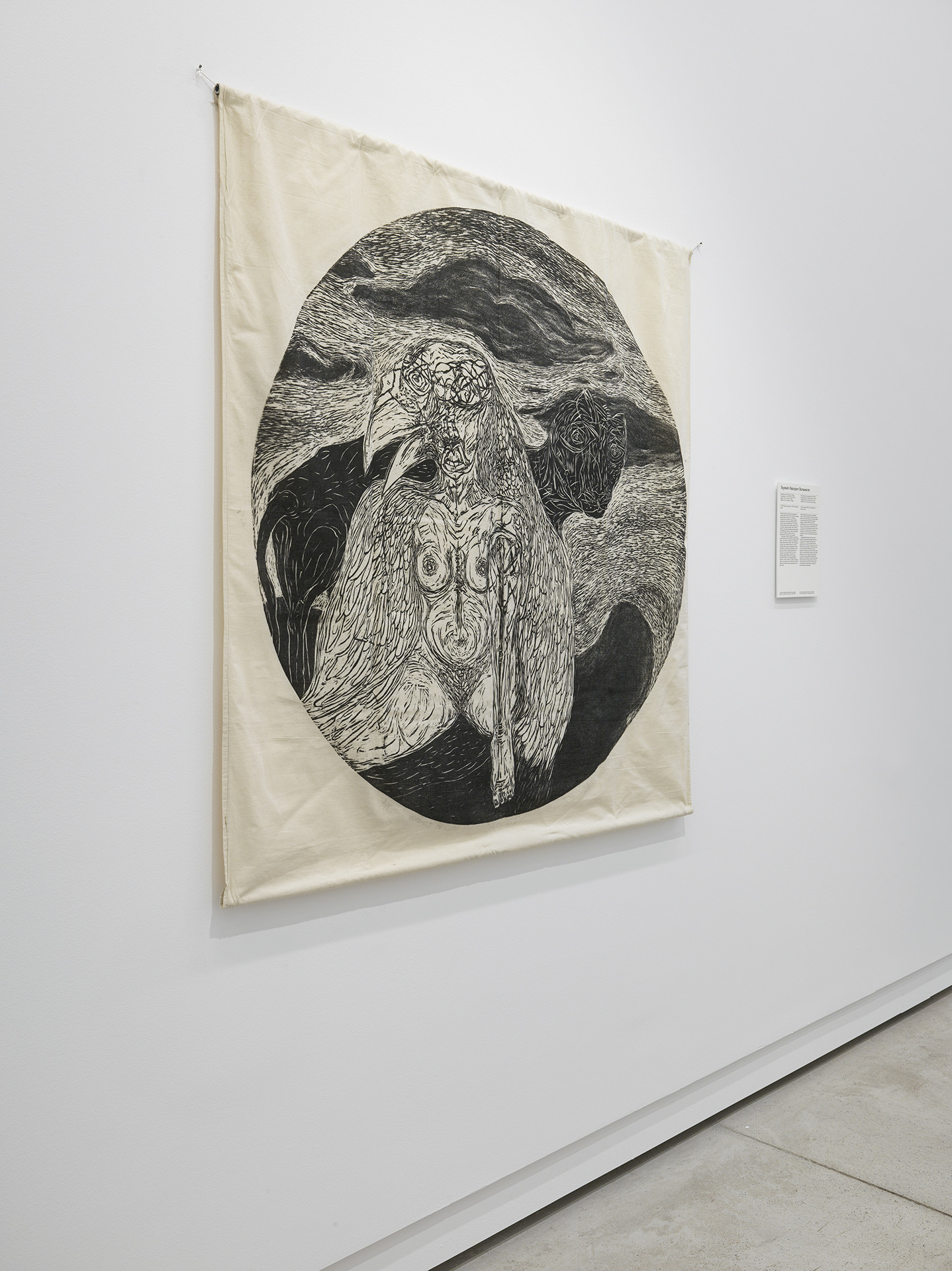
35th Ljubljana Biennale of Graphic Arts, Cukrarna. Tejswini Narayan Sonawane, Femininity, 2015, woodcut print on cloth. Photo: Jaka Babnik. MGLC Archive
Another curatorial strand of the exhibition echoes the collective ethos of printmaking studios, often sites of activist community building. As loudly demonstrated by documenta fifteen, printmaking still holds strong potency in political activism, and revolutionary potentials in many parts of the Global South. Printmaking workshops provide vital meeting places for artists to exchange skills and ideas. The nature of printmaking as a collaborative process nurtures collectivism and shared political visions. The economy and circulation of prints provide an alternative to the dominant narrative of art markets and traditional art institutions. Supporting each other within close-knit communities, artists with limited economical means, who are tied to domestic labor or day jobs, could sustain their practices.
An impressive example of that is the practice of Kagiso Patrick Mautloa (b. 1952), presented in another room in the Tivoli Castle. His printshop, part of the Bag Factory Studios in Johannesburg, where numerous artists and collaborators employed printmaking as a political tool, played a significant role in South Africa’s anti-apartheid movement. Mutloa’s expressive woodcuts of urban scenes are an archive of personal and collective memories entangled in their specific historical conditions. Love, hope, sorrow and anger is present in every cut and every line.
Reverberating the legacy of printmaking, the exhibition also follows the development of younger generations, as in the case of the aforementioned Tejswini Narayan Sonawane. Also on display at Cukrarna, the prints by Soghra Khurasani (b. 1983) strike a more meditative tone. The Indian artist’s highly laborious works emanate magnetic power, standing out against the larger, research-based installations presented in this venue.
A more ambivalent situation emerges when the emancipatory drive of the exhibition meets the actual tensions in the city of Ljubljana. The Municipality recently hit the headlines for forcefully evicting the Autonomous Factory ROG, a squatted bicycle factory that functioned as a cultural center, and a medical clinic for asylum seekers. Located right in the middle of the old city, ROG was clearly an obstacle to the swift gentrification and “Airbnbzation” rapidly devouring the city center.
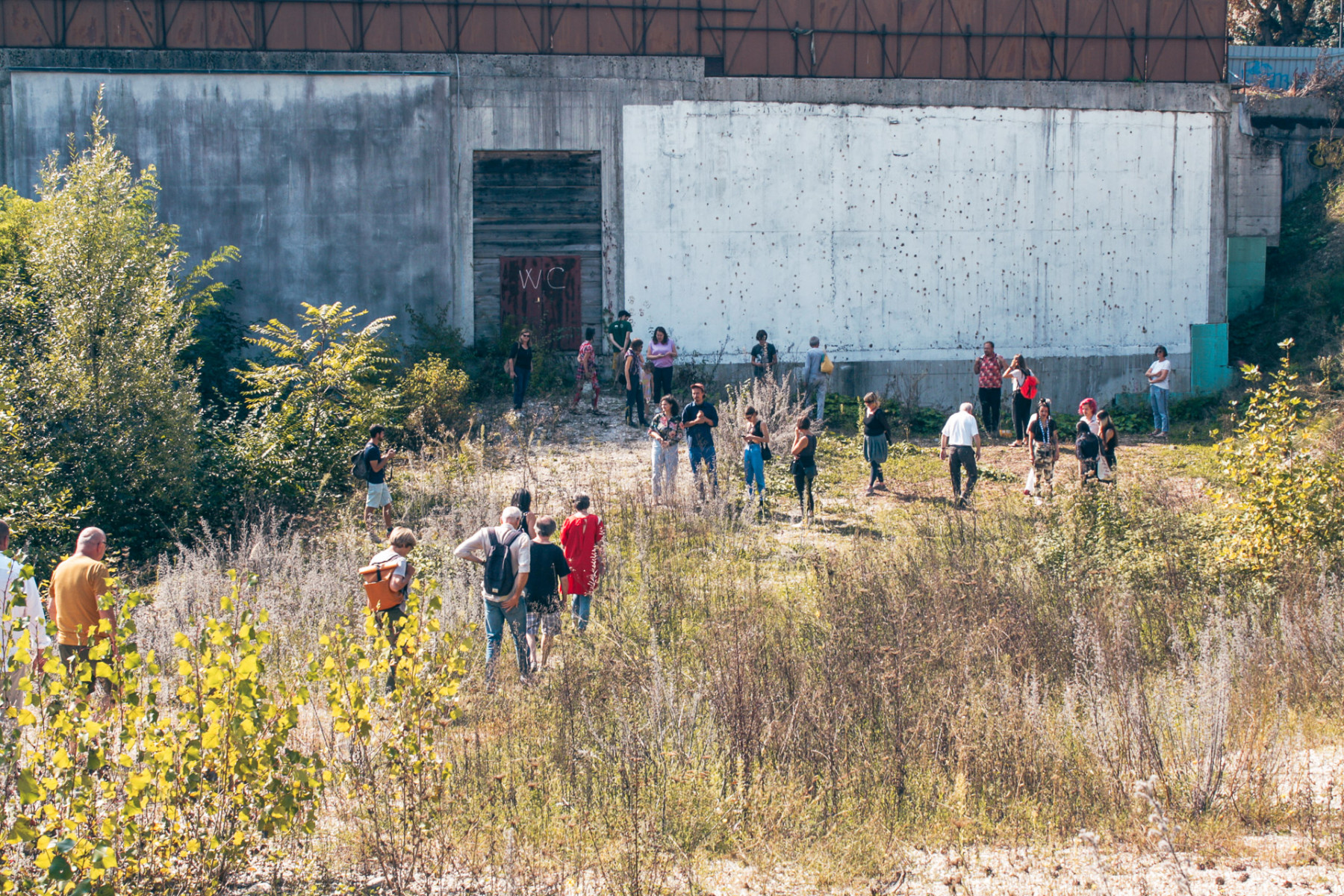
35th Ljubljana Biennale of Graphic Arts, Krater, Creative laboratory in a construction pit. DNLM (Danilo Milovanović), Muddy Demonstrations, 2023. Photography: Aleš Kladnik. MGLC Archive
The Biennale wishes to stand in solidarity with the struggle for the right to the city. The curatorial team invited positions, like Kvadratni meter and Danilo Milovanović, and chose locations, like the squat PLAC and the feral occupation Krater, that directly address the issue. However, it's dubious whether this choice manages to move beyond a representative gesture. The attention boost drawn by such an art event rarely benefits these sites, which, after the exhibition, are left alone with the rising pressure of real-estate interests attracted by an enlarged rent gap. The suspicion got stronger when we were handed a protest paper circulated by Krater Collective bemoaning unpaid labor under the Biennale’s organization.
The strengths of the exhibition, its historical sensibility and the focus on printmaking, could not conceal what’s missing from the promise of the preannouncement. In an introductory note to the catalog, Ibrahim Mahama anticipates that a “parliamentary form […] will be built in the center of the exhibition” of which the final show bears no trace. Nonetheless, the team didn’t gloss over this blunt absence, openly signaling that the realization process was not extremely smooth.
It’s here, at the very friction between the Biennale’s organization and its artistic direction, that we get to understand what the extended curatorial team has achieved. In the face of funding challenges, they have pragmatically chosen to pool together resources with two other sister events with overlapping research interests, the Kaunas Biennial and the Contemporary Art Festival Survival Kit 14 in Riga. With the openness of this multivocal curation, this historically significant Biennale is oriented towards an infrastructural platform to bring together interlinked but scattered communities, people and practices too often separated by geographical distances and political borders. Regardless of its slight romanticism and elusive take on the future, the 35th Ljubljana Biennale dares to dream failed promises anew.
FROM THE VOID CAME THE GIFTS OF THE COSMOS
35th Ljubljana Biennale of Graphic Arts, Ljubljana, Slovenia
15/09/2023 – 14/01/2024